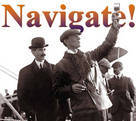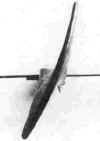|

 Up
Up 
 Propellers
Propellers
-R-Us

(You are here.)



  Need
to Need
to
find your
bearings?
Try
these
navigation aids:
If
this is your first
visit, please stop by:
Something
to share?
Please:



|
|
Available in Française, Español, Português, Deutsch, Россию,
中文,
日本, and others.
 mmediately
on returning to Dayton, Wilbur wrote ten engine manufacturers, giving them his
specifications for an airplane engine. He needed an gasoline motor that would weigh no
more than 180 pounds and deliver at least 8 horsepower. While waiting for a reply, the
brothers turned to making the propellers. mmediately
on returning to Dayton, Wilbur wrote ten engine manufacturers, giving them his
specifications for an airplane engine. He needed an gasoline motor that would weigh no
more than 180 pounds and deliver at least 8 horsepower. While waiting for a reply, the
brothers turned to making the propellers.
As was their habit when tackling a thorny
engineering problem, they first searched the literature for research on propeller design
-- and found nothing! So they began to think it through themselves. Their first insight
set them on the right track. "It was apparent," Orville wrote later, "that
a propeller was simply an aeroplane [wing] traveling in a spiral course." That meant
that the research they had already done on wing design could be applied to propellers. But
it wasn't quite that simple. Wrote Orville, "With the machine moving forward, the air
flying backward, the propeller turning sideways, and nothing standing still, it seemed
impossible to find a starting point from which to trace the various simultaneous
reactions. Contemplation of it was confusing. After long arguments, we found ourselves in
the ludicrous position of having been converted to the other's side, with no more
agreement than when the discussion began."
Charlie Taylor later recalled these arguments. "Both boys had tempers. They would
shout at one another something terrible. I don't think they ever got mad, but they sure
got awfully hot."
To make matters worse, there was no engine available that fit Wilbur's specs, and no
company that was willing to develop one. So the Wrights, along with Charlie Taylor, waded
into the the unfamiliar territory of gasoline engine design. "We didn't make any
drawings," Charlie remembered. "One of us would sketch out the part we were
talking about on a piece of scratch paper and I'd tack the sketch over my bench."
Nonetheless, they built the engine in six weeks.
They ran it up for the first time in February. On the second day of tests the bearings
froze, and they had to start all over. But Charlie had the rebuilt engine running smoothly
in May, in plenty of time for the 1903 flying season. They settled their differences on
propellers, too. Using a hatchet and a draw knife, Wilbur and Orville hand-carved two
8-1/2-foot-long propellers from laminated spruce, and covered the tips with canvas to keep
the wood from splitting. When tested, the propellers were 66 percent efficient, converting
two-thirds of the energy applied to them to thrust. This was within 1 percent of what the
brothers had predicted, using the formulas that they had argued long and hard over.
The airplane on which they would hang the engine and propellers was the largest they
had ever built, 40 feet from wingtip to wingtip. Orville referred to it as the
"whopper flying machine." It was so large, in fact, that they never fully
assembled it in Dayton. They just packed up the parts for shipment. On September 23, 1903,
Wilbur, Orville, and their whopper flying machine left for Kitty Hawk.
|
Click on a
photo to enlarge it.

Some of the many calculations that Orville and Wilbur made to design
efficient propellers.

The end result of all their calculation was the first truly modern propeller.

The end view of a 1903 propeller shows how the blade was curved like a wing.

The 1903 Wright engine, viewed from the side. The four combustion chambers
would glow red hot when the engine was running.

An inside view of the engine. The Wrights elected to make a
"horizontal" engine because that's what they could machine on their limited
metalworking tools.
|